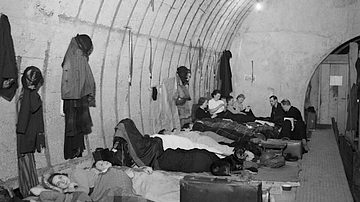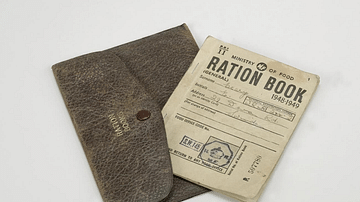In this collection of resources, we examine daily life during the London Blitz, the period of intense bombing of the British capital from 1940 to 1941 during the Second World War (1939-45). We look at Nazi Germany's objectives for the bombing, how civilians spent night after night in air raid shelters, and some of the privations endured such as the evacuation of children and rationing of food. We also encounter eyewitness accounts from those directly involved such as firefighters, air raid wardens, and women volunteers.
One of the oddest things about our everyday life is its a mixture of ruthless horror and every-day routine. I pick my way to work past the bomb craters and the shattered glass, and sit at my desk in a room with a large hole in the roof (a block of paving stone came through).
Phyllis Warner (Gardiner, 48)








